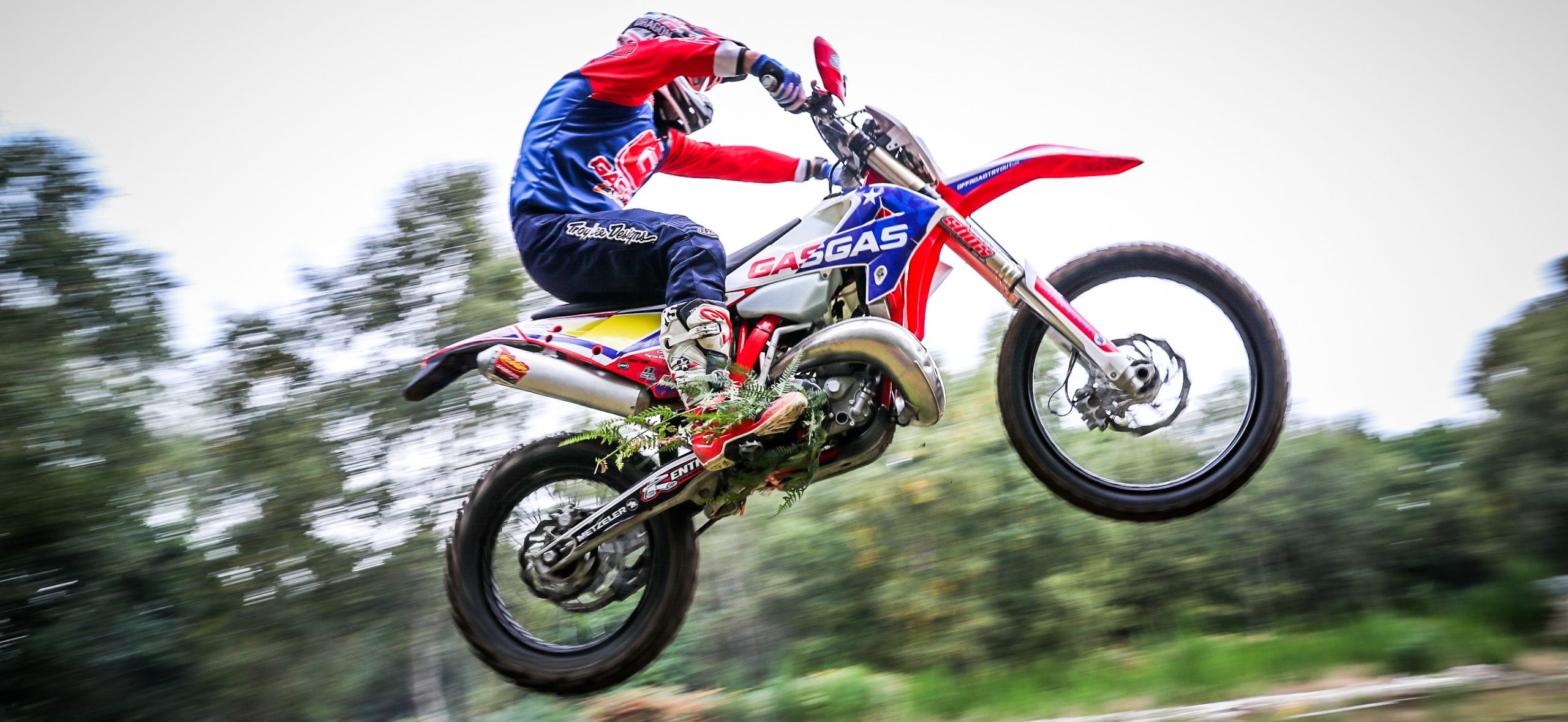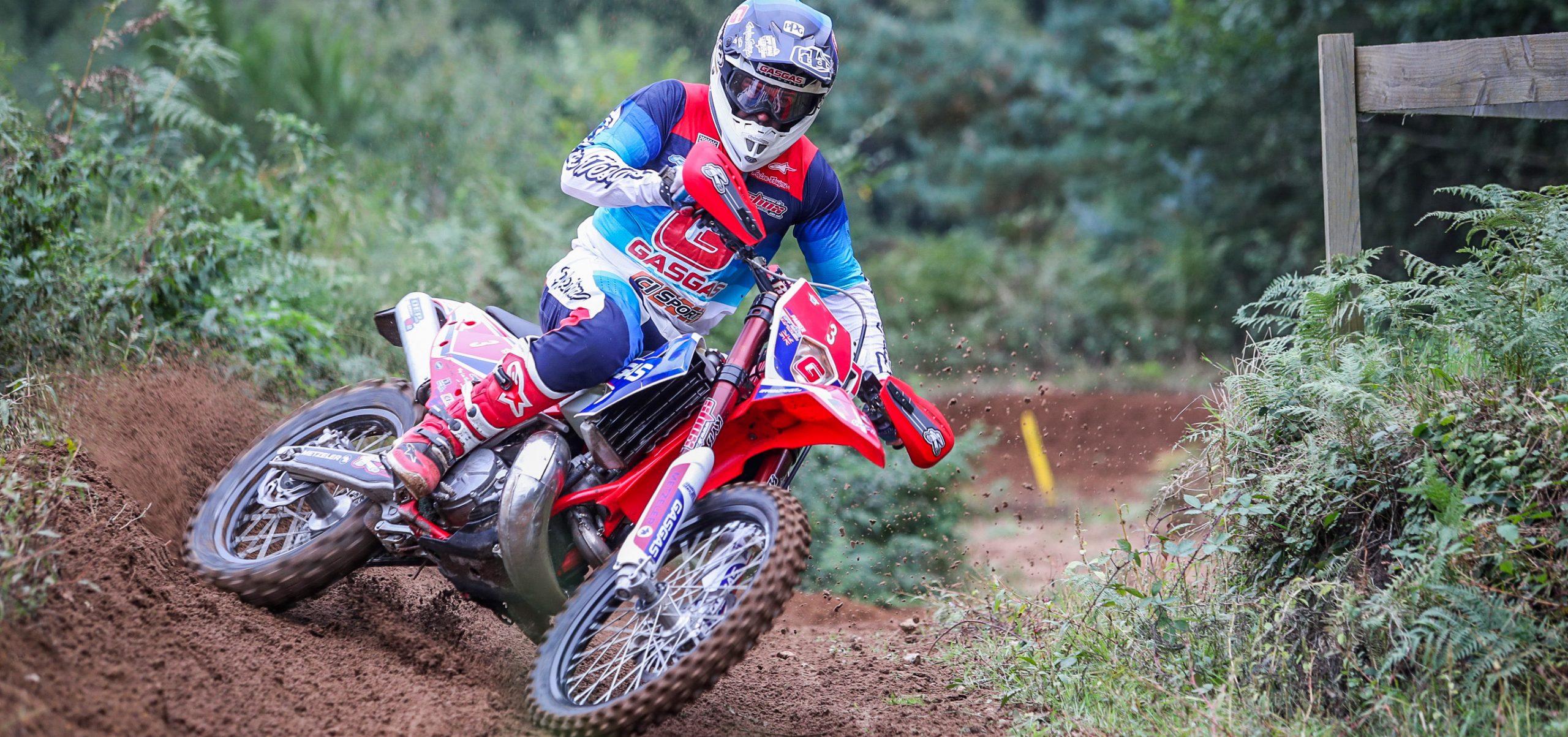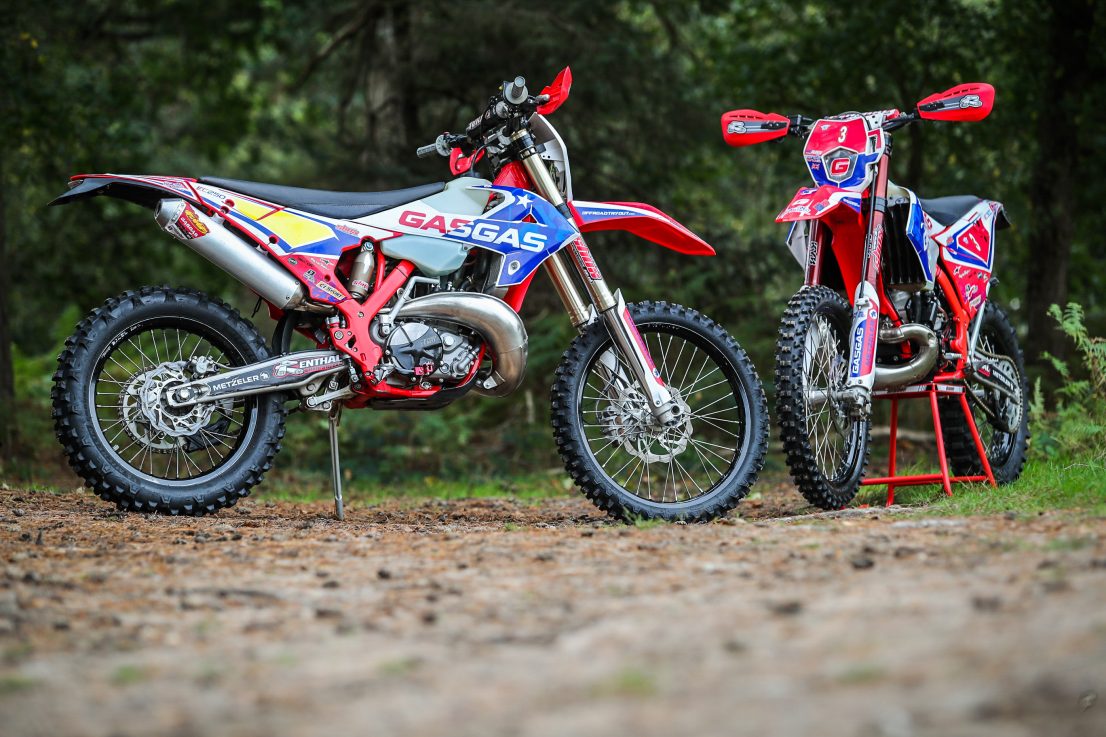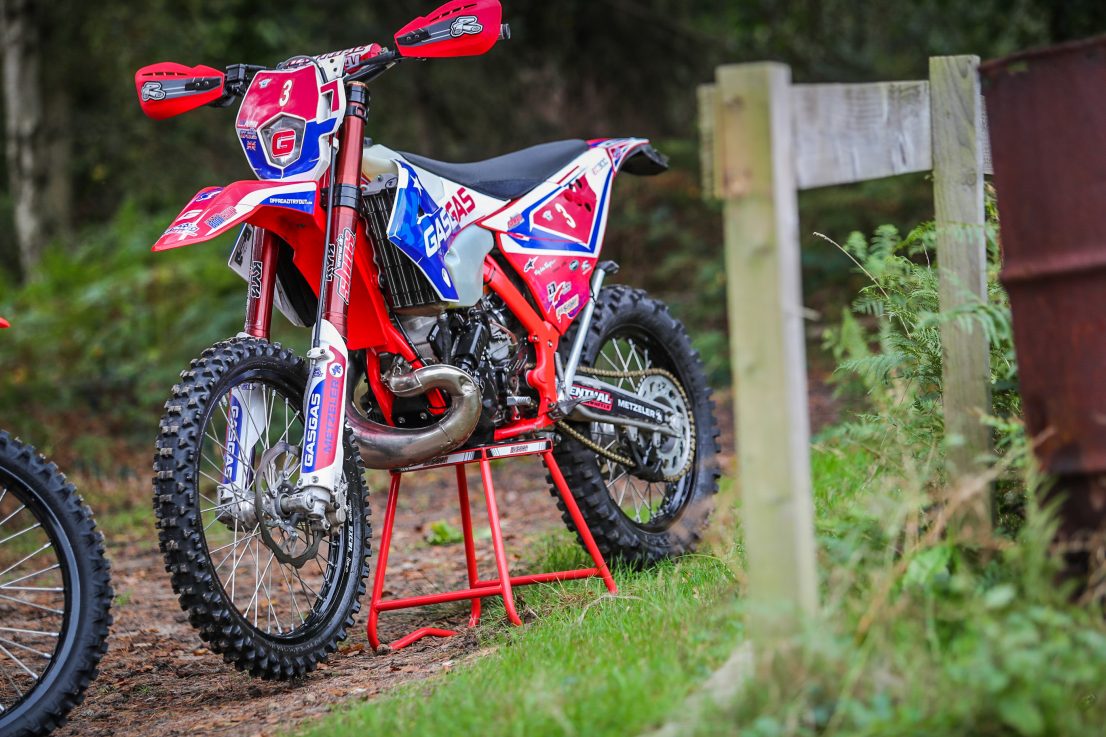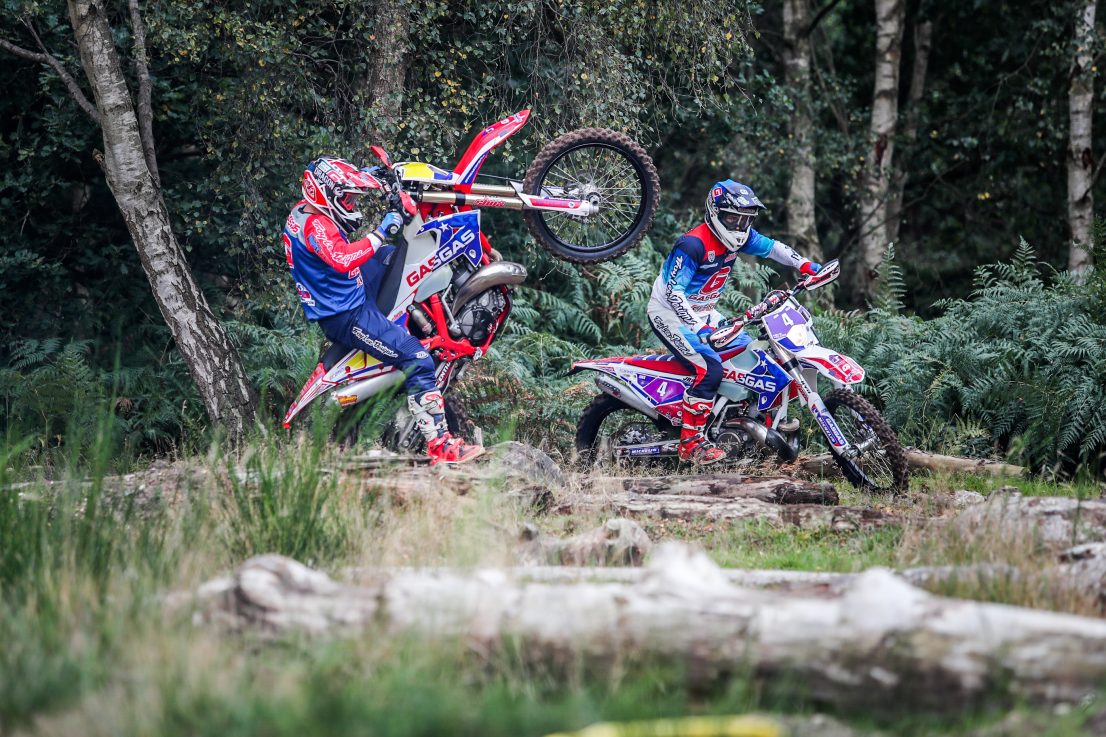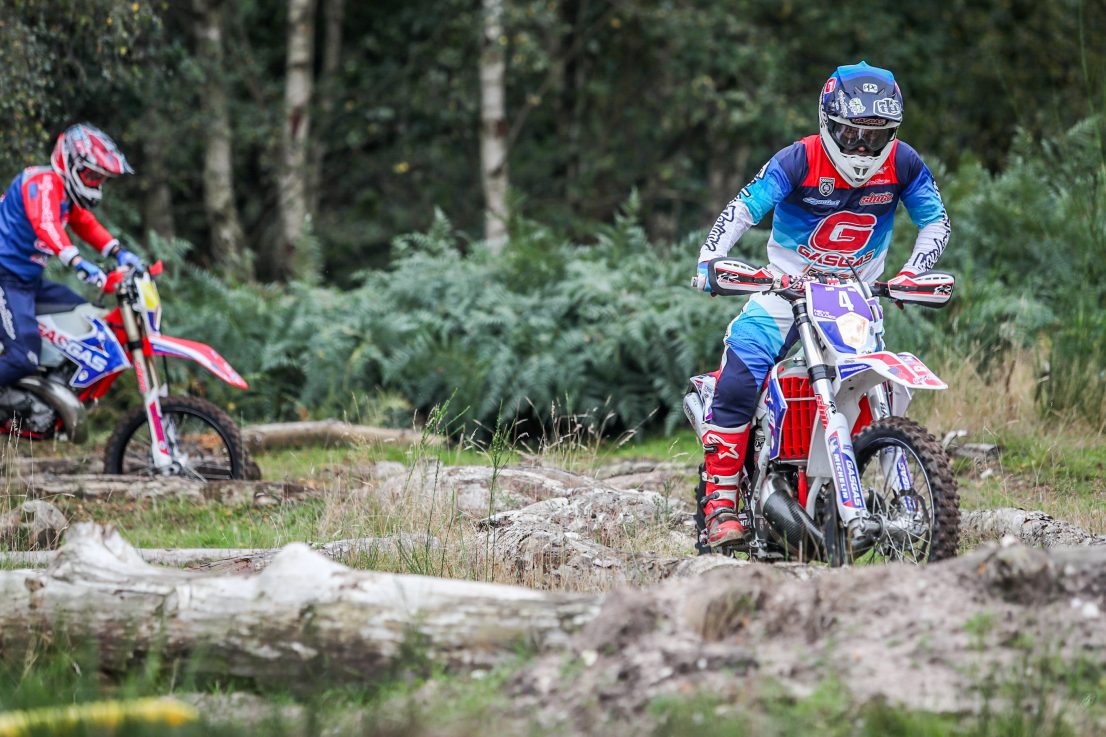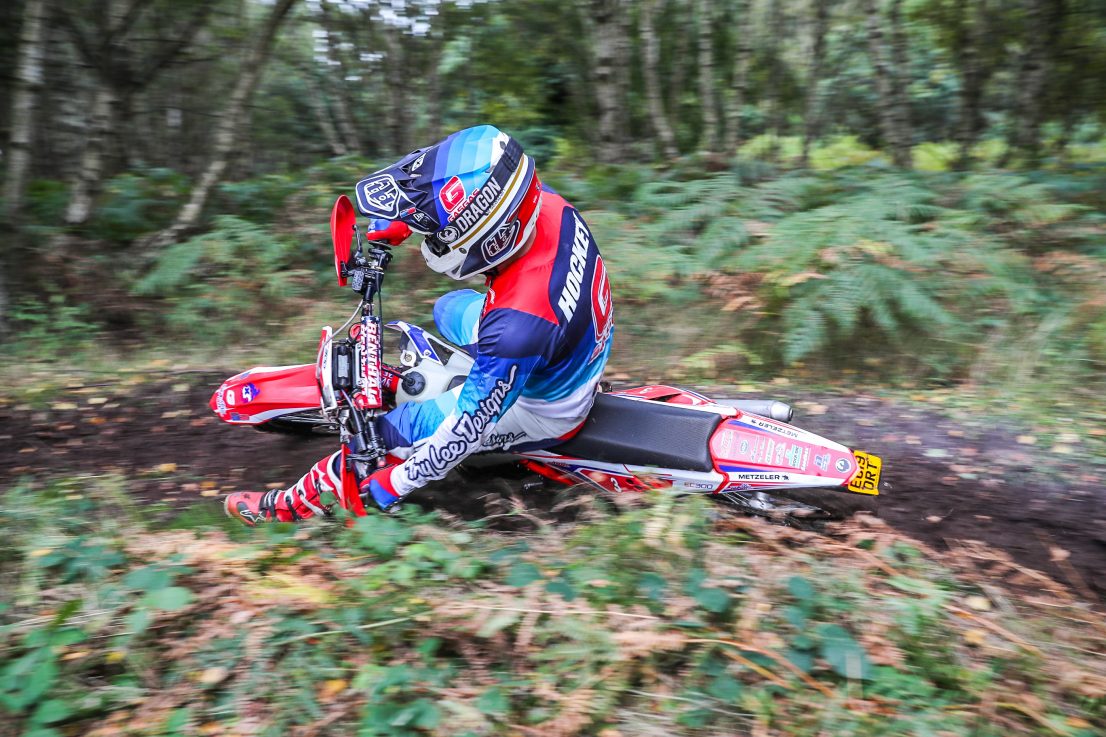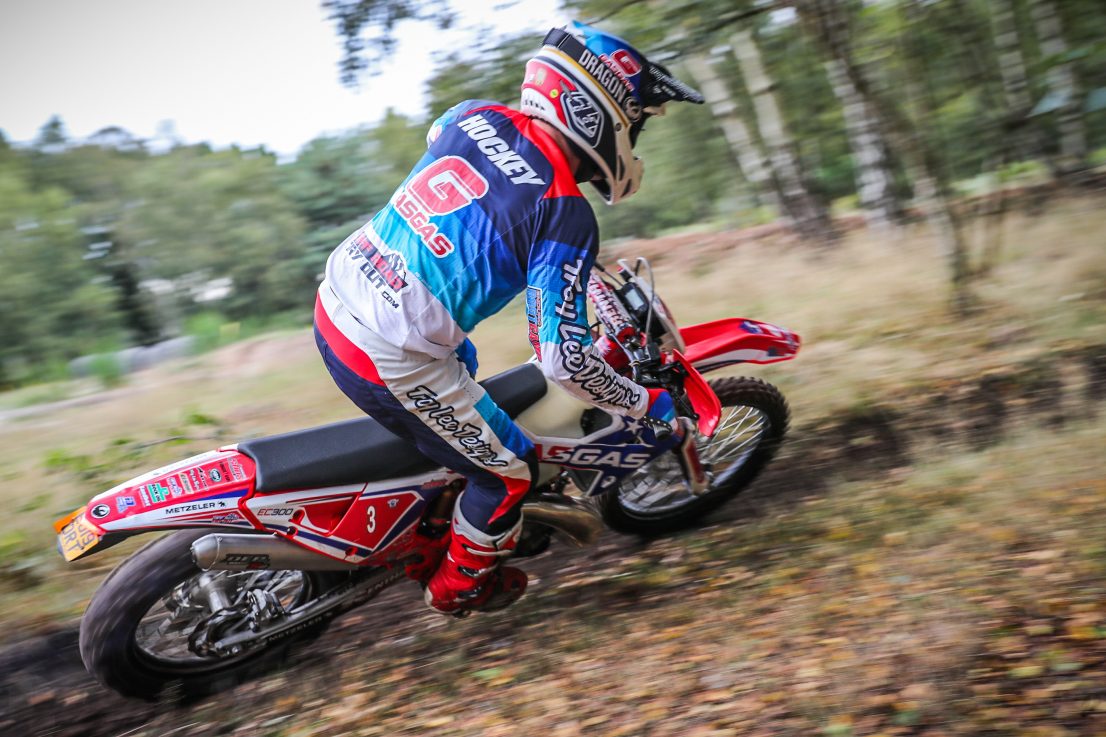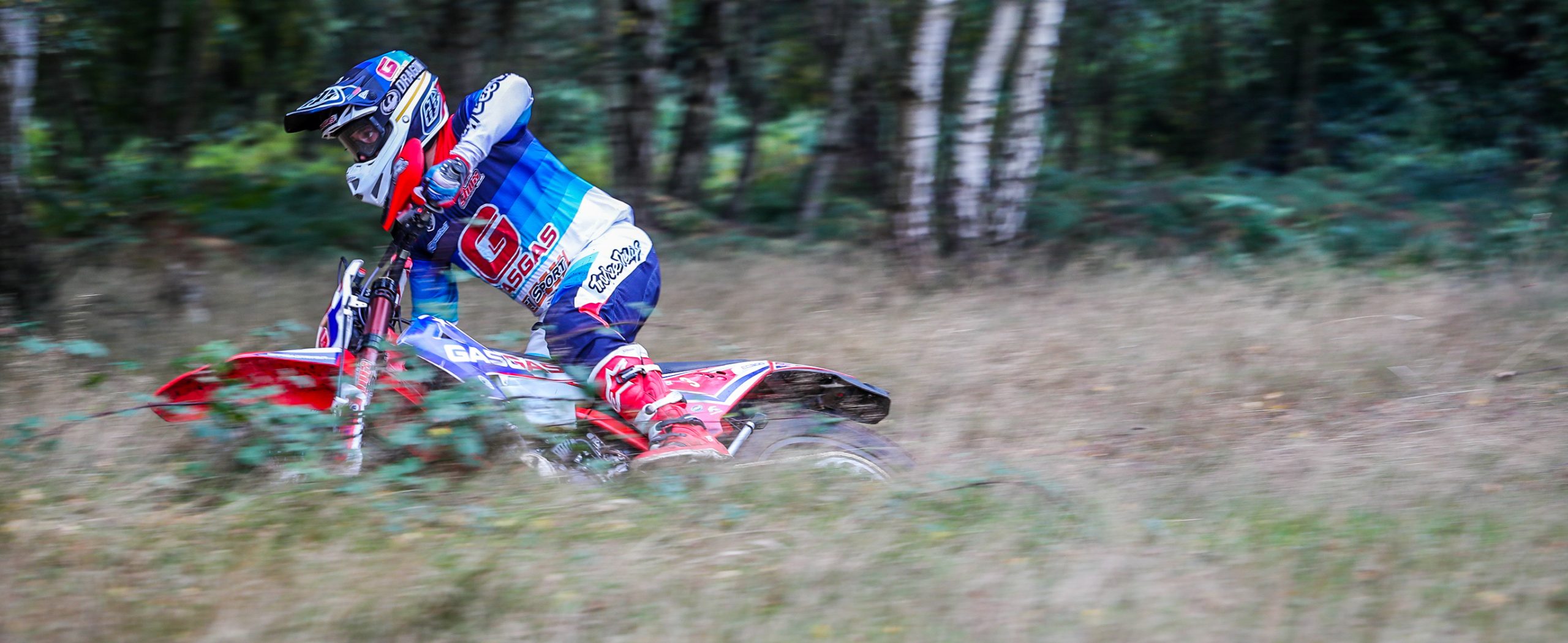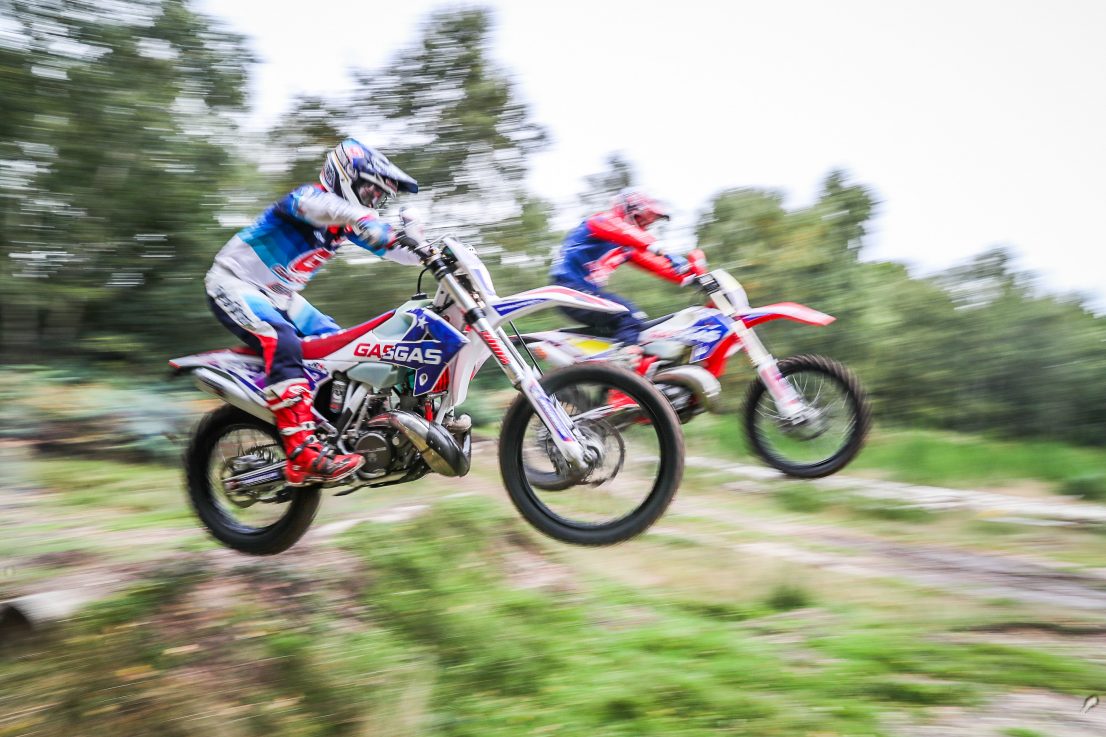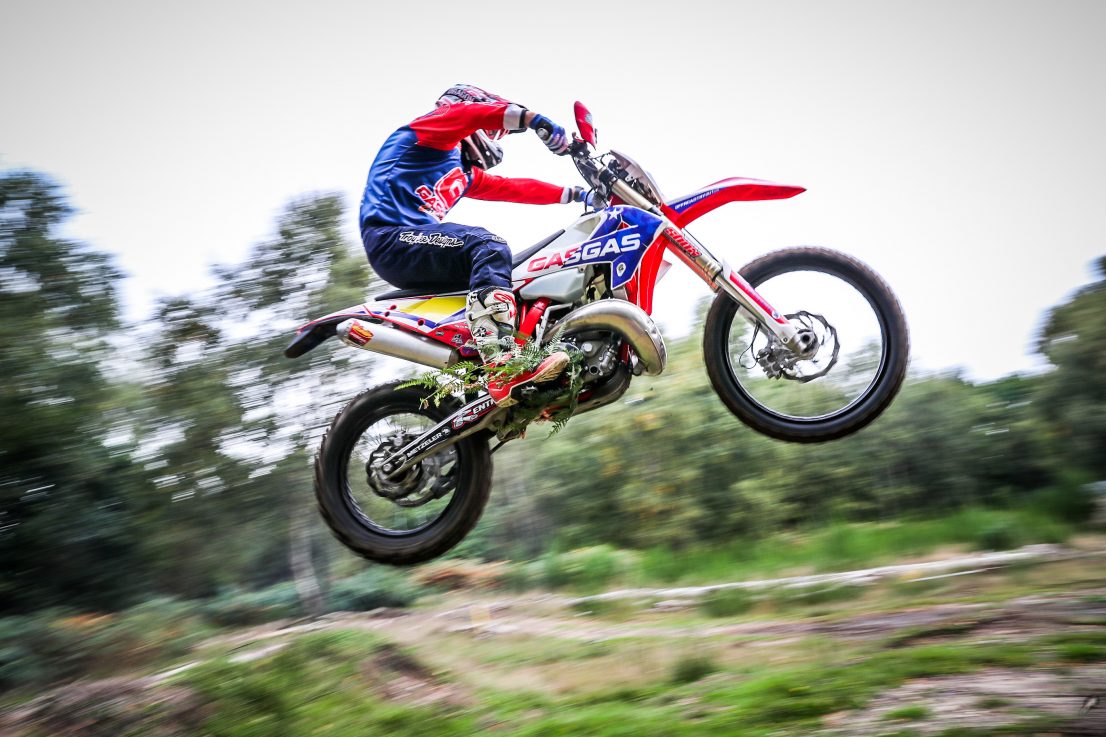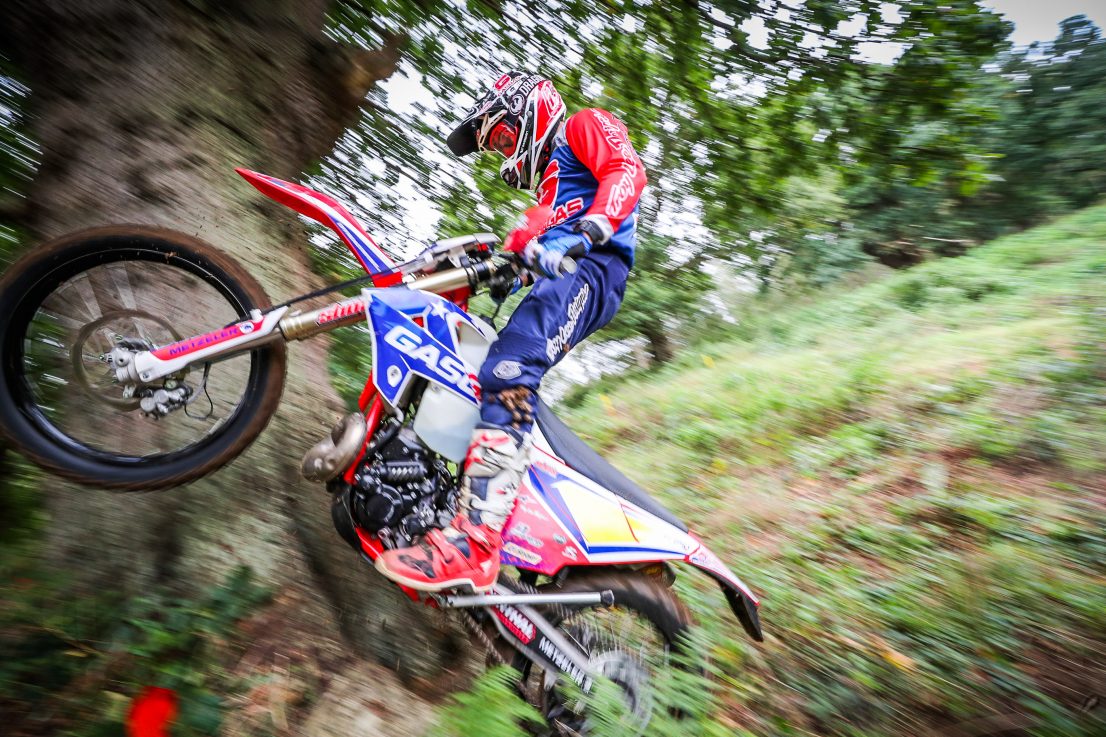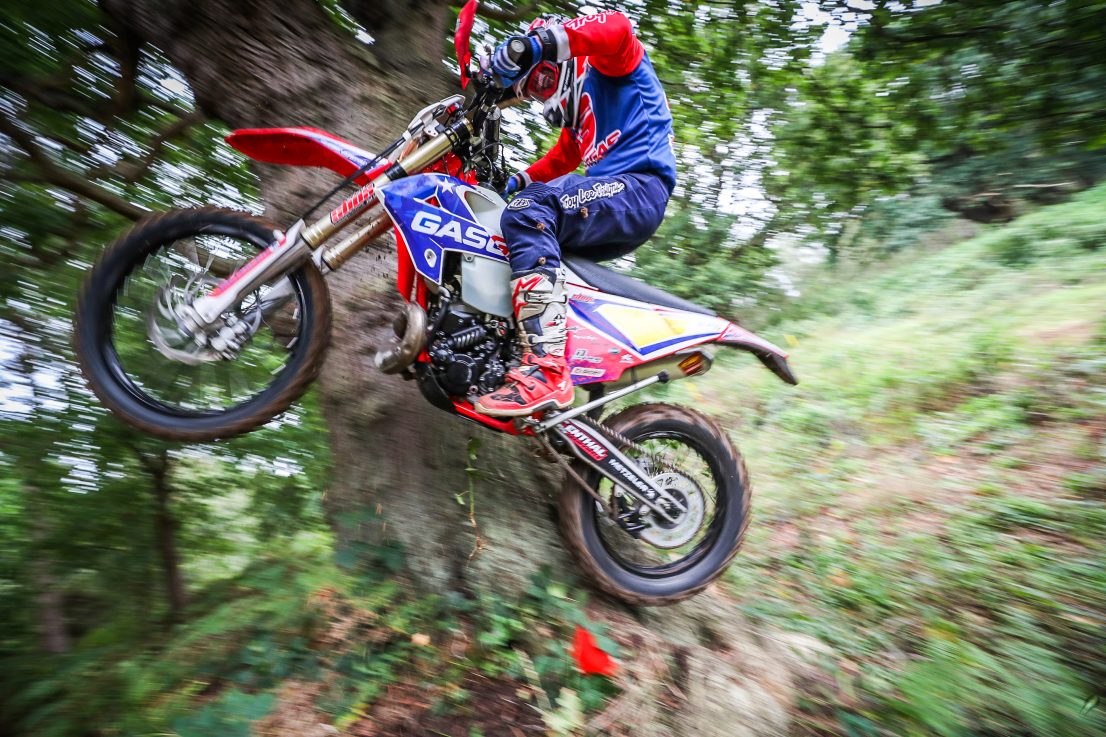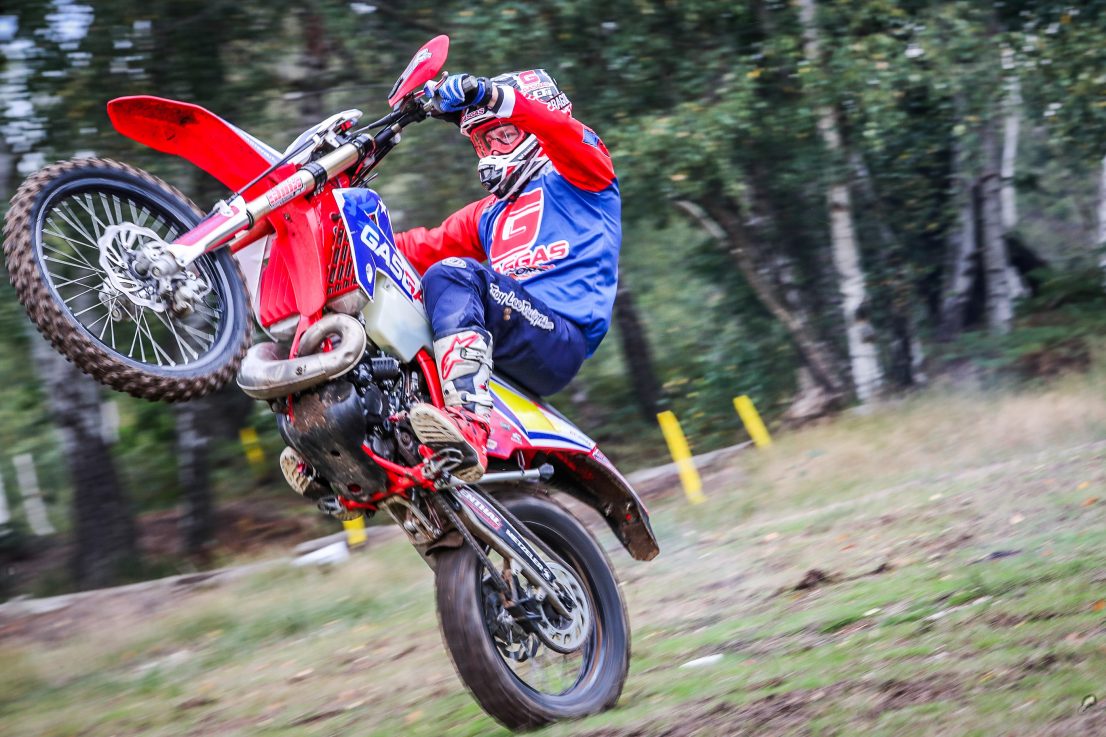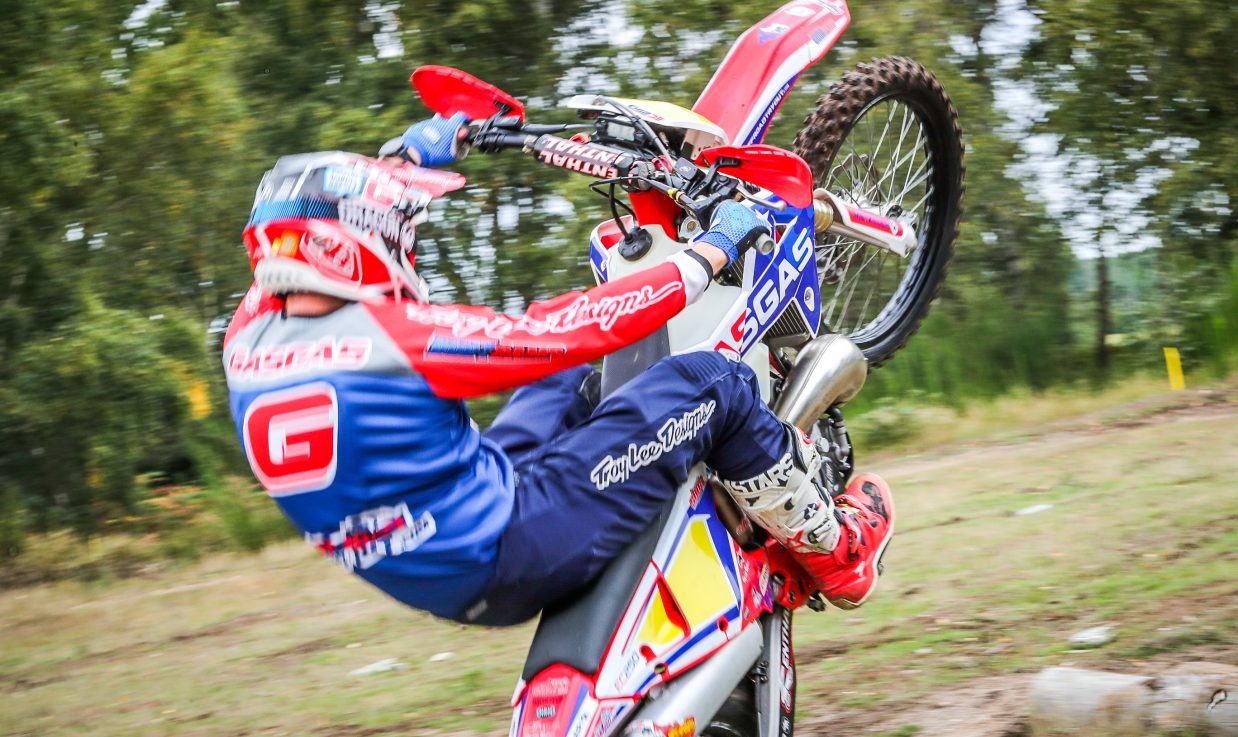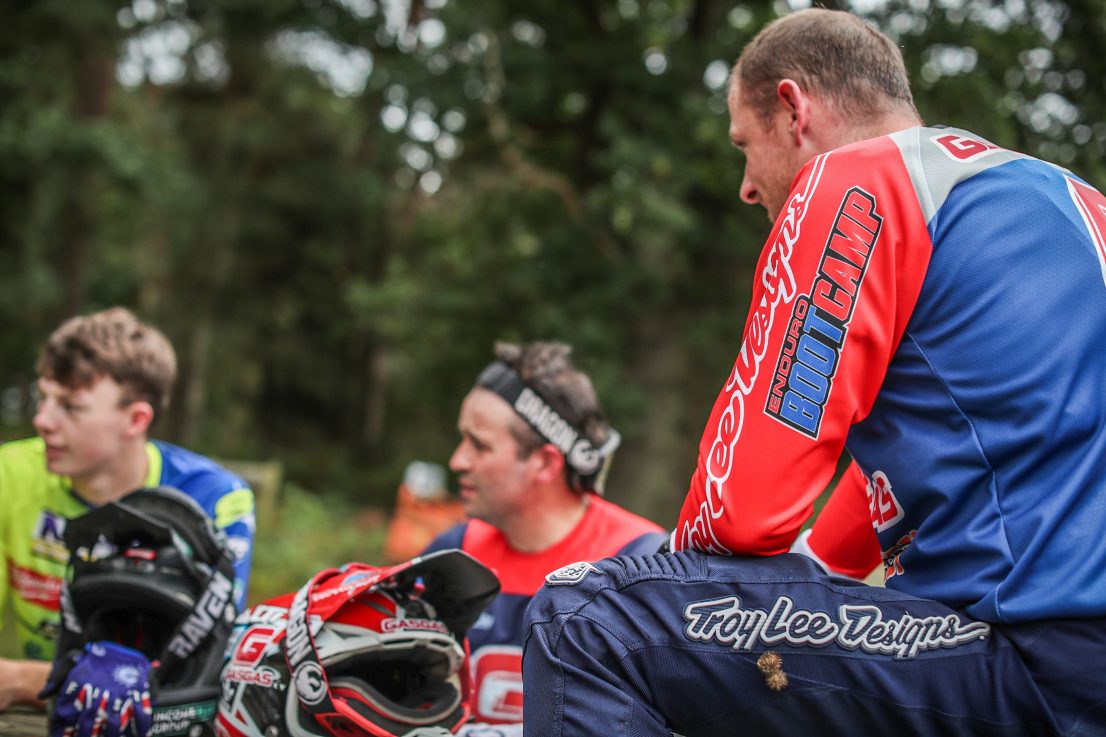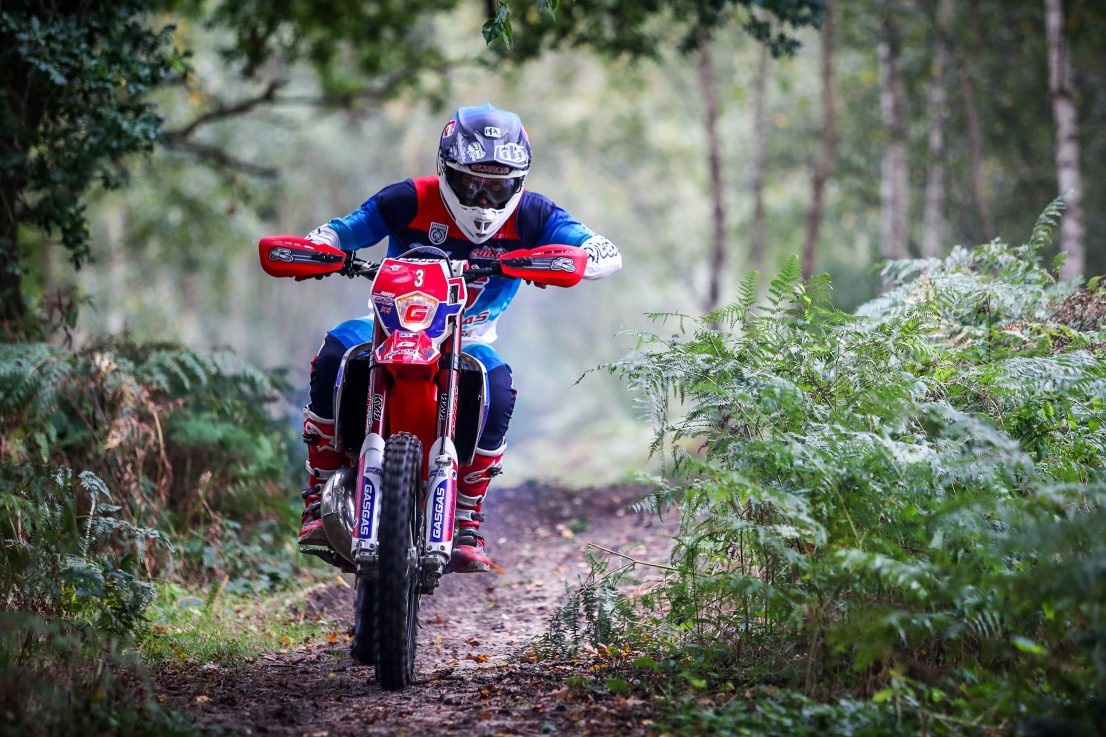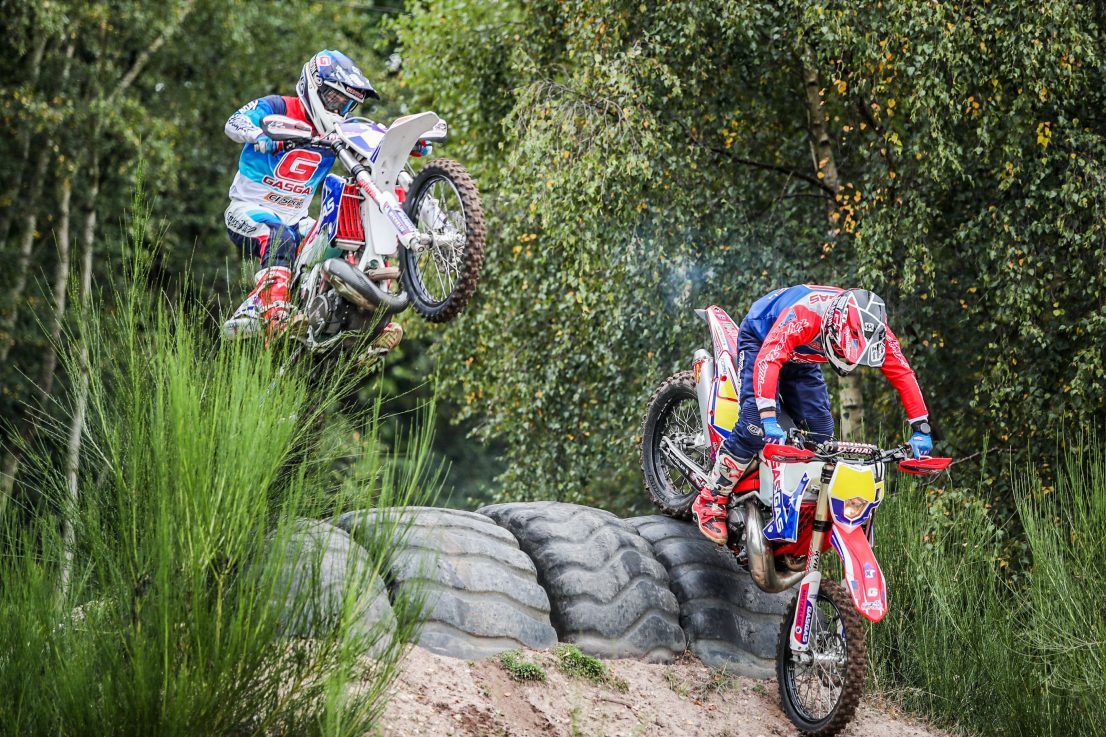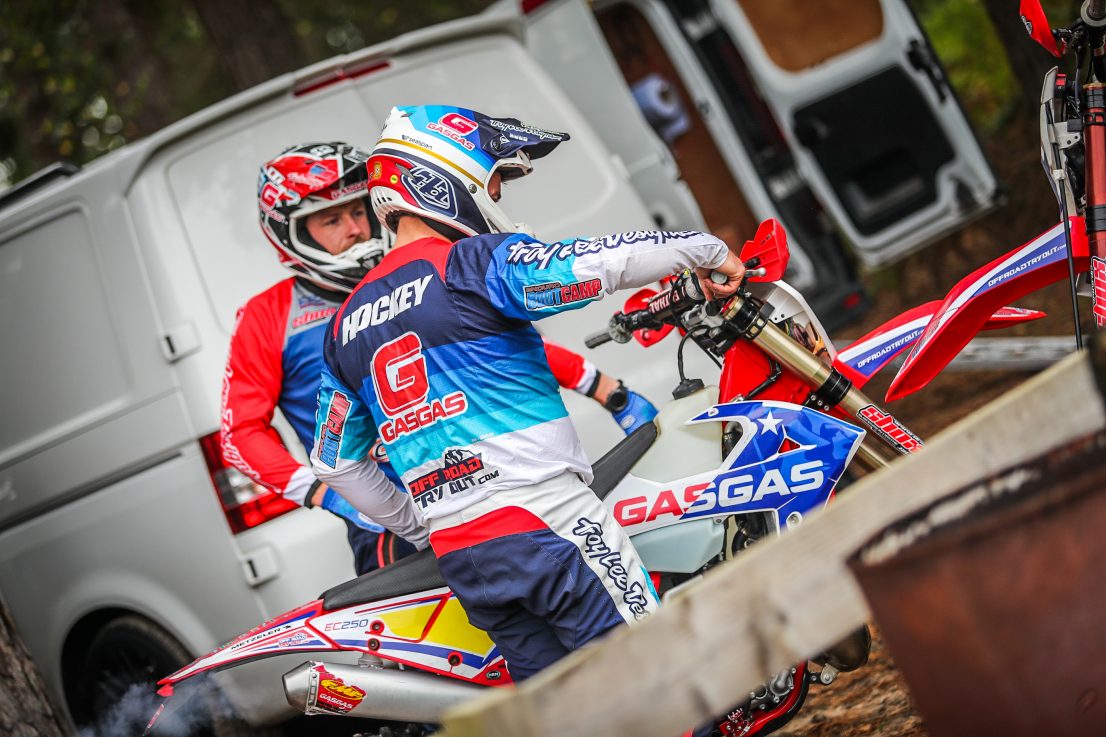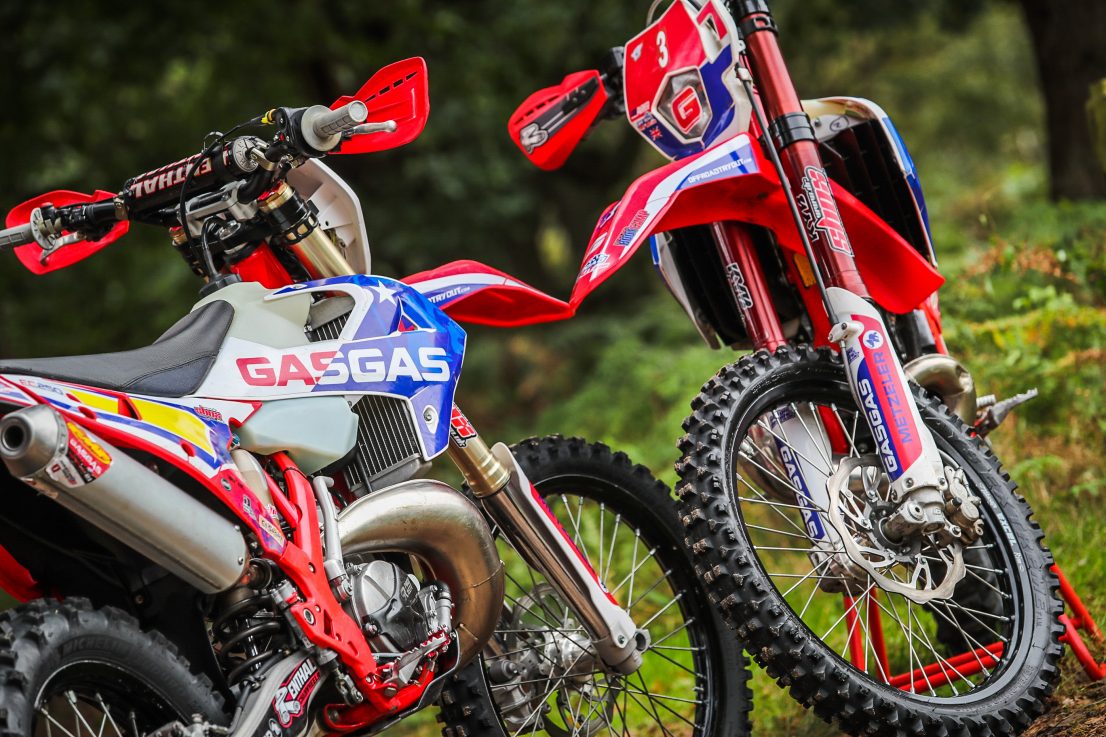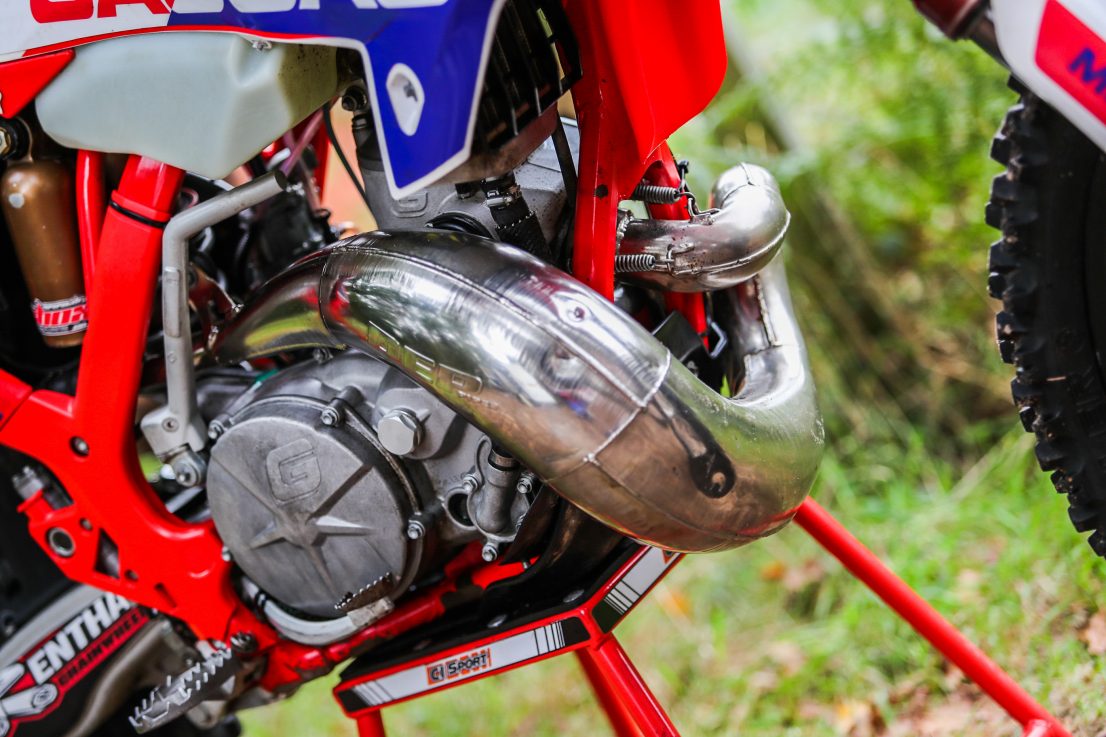2020 UPDATE: Since this test in 2019, the design rights and tooling for these models have been sold to rival Spanish firm Rieju. So we can assume that future Gas Gas models will be based on the common platform solutions coming from Mattighofen. But Gas Gas as we’ve know them will now – well, soon – be in production again with the new branding…
Gas Gas made a bit of a play with their 2018 model, named the Phoenix on account this was the Spanish firm coming back from flaming ruins of yet another financial collapse. It featured a new frame, new suspension and it was notably well appointed when it came to component suppliers. Quality was at the forefront – important for a company that was visibly struggling. The bike was good, maybe even great, but a short launch (where we rode for a brief few laps around a wet grassy paddock) didn’t really constitute a proper test nor a hard sell. Since then (in the UK) we’ve seen precious little in the form of promotion, although the bikes have been selling, maybe not in big numbers, but wise-heads have seen that the new Gassers have been a good thing. And fortunately the Phoenix name hasn’t stuck, the current Gasser enduros are known, as they always have been, as ECs.
GAS GAS 2019-2020
While not strongly promoted, the Gassers have been winning the odd shootout (notably that by Australian Dirt Bike – beating all-comers in the 300cc two-stroke category, yeah including KTM/Husky!) and winning the odd race here and there, mostly in the hands of privateers in sub-national competitions (we should add Christophe Nambotin – former world champion – has won the French E3 championship this year). For sure they’ve been flying below the radar.
Probably because of their rollercoaster financial position it’s been a brave man/woman who’s bought a Gas Gas recently. But such bravery has paid off, for the Gas Gas as it stands today is a fighting-fit bike. It’s a rose by any other name – badged Beta or KTM (ah yes!) it would sell more.
It is worth considering the spec. That new frame – you can see that it’s not a million miles from a KTM in the way the frame’s double cradle curves and the junction around the swingarm and footrests all looks very familiar. And so the geometry is slap bang middle of the road, not some crazy outlier of a design. So match that chassis with industry-topping Kayaba suspension and already you’re 80% toward a great bike. Add in Excel wheels (with Michelin tyres), add in a complete FMF exhaust, Keihin carburetor (no fuel injection), Neken handlebars. It’s all top shelf.
Only the engine seems dated given its long standing. The fact that the electric starter is still sat outboard above the left crankcase does date it now that so many two-stroke enduros have their starters safely stowed away under the crankcase. But that aside the motor is excellent, Gas Gas know enduro inside and out and so their ECs make near perfect power for enduro.
Meet Dr Shox
For this mini test we hooked up with Chris Hockey, aka Kiwi, aka Dr Shox (suspension tuning), aka Off-road Tryout (rider training). Kiwi was formerly a British ISDE team member (has the odd ISDE gold medal) and even tried his luck in the world championship for a while. He knows his stuff. For a few years now he’s been using Austrian machinery in his schools and for his own racing, but recently swapped to Gas Gas.
“Financials prompted the change. When you’re buying a £7000 bike then find you’re spending another three or more thousand on it to make it competitive it makes you question what you’re doing. As well I support local riders (who race club, national and international levels) and as these guys are generally unsponsored that kind of spending is tough for them too.
“So I looked around to see what else I could find. I tried a couple of machines that were very good, but again those needed expensive suspension work to make them race winners. Then I looked at Gas Gas, with a frame that looked like the one on old KTMs, but matched with KYB, which I used to love when I rode Yamaha. The bikes were already a thousand pounds cheaper to buy, but I could see would save us thousands by having the good suspension fitted to start with. And when I looked closer and saw the FMF pipes, the V-Force reeds and all I could see a lot of sense.
“Of course I was worried, you hear a lot of people saying how they could be unreliable. But I know Danny McCanney – ex world champion and former Gas Gas rider – so questioned him and he said they were basically sound. So I called the UK importer to see if I could try one. He said I could buy one! So he sent me one with an invoice, I remember thinking I better like this thing. And I did, we all did.
“I’ve been wondering what’s the catch, why isn’t everybody riding one of these, but it’s that same old thing, people are like sheep, they just follow.”
A tweak or two
Kiwi’s lifetime of riding enduro did allow him to sort, surprisingly quickly, the Gas Gas’ odd foible – stuff that leads to a bad reputation, but actually isn’t as bad as it might seem.
First mod Kiwi makes is to replace the starter button. The factory-fitted button hates power washers and fails almost immediately. So Chris replaces this with an £8 aftermarket kill button that you’ll find looks very similar to those on KTMs etc. He gets immediate reliable starting for doing that.
Next job is to thread lock all the fasteners on the bike, otherwise they will vibrate loose (Kiwi: ‘you wonder whether they only do them up finger-tight at the factory?!). This was, of course, a job all enduro riders used to do religiously (along with greasing the steering head and swingarm bearings), but given more stringent attention by most manufacturers – or is it attention given at build-up / PDI at the retailers – has fallen from common usage.
Second mod is a skim of the head.
“It makes the power come on sooner, but actually smoother as well. As it was, standard, the power came in later and too strong, which upset the handling as well, making the bike awkward to launch out of corners and a bit tricky on jumps.”
Last mod is a minor tweak to the shock, details of which Kiwi wouldn’t immediately divulge – but will do for customers!
“In all it would probably cost less than £200 for the button, the shock mod and head skim and a tube of thread lock. And then the bike is truly ready to race, super-competitive, and for a big saving on what you might be spending elsewhere.”
So, the test
There’s no question the ECs – I rode the 250 and 300 – are race bikes first and foremost. The development of these models clearly looks to have been along the lines of optimisation for competition, there’s nothing here that says ‘trail’. The bikes come with full power, delivered by that 38mm PWK Keihin through the V-Force 4 reed while spent gasses come firing out of the FMF expansion chamber and Powercore 2.1 silencer. You premix the fuel, there’s no auto-lube. The electric starter is about the only concession to creature comforts, yet there’s still a kickstart (old school / hard core enthusiasts will delight). And boy is it light. It’s something like 13-kilos lighter than a four-stroke (say WR250F) and you really notice that.
Only all that race prep doesn’t make these bikes aggressive. Far from it, the power is progressive, almost stepless. It’s up to you how deep you want to go into that power. Likewise the chassis set up is superbly neutral. The Kayaba suspension doesn’t sink, but it stays supple, riding high unless hitting big stuff, and linked with the very natural turn-in that the geometry provides it’s easy to feel very much at home very quickly. So you belt along the straights confident that the Kayabas will deal with all the issues, big and small, while also knowing that cornering is again a no surprises affair. The bike just gets it done.
The ergos, likewise, are exactly at the peak of enduro bike development, with a flat saddle that gets you as far forward as you need, while the bars are neither too high nor too low, I didn’t want to change a thing. And that Magura hydraulic clutch is feather-light so no fatiguing the rider there.
These bikes had been modded by Kiwi as he described and yes that head skim worked for me, the slow clubman, as well as it does for the expert. The expert will appreciate that sweet-even rush into the powerband, I just like that it doesn’t have a sudden uncontrollable surge as it gets on pipe, which would have me short-shifting to avoid the surprise.
I noted that the Gassers now come with tool-less air filter access through the sidepanel, as per KTM, which is also spot-on. Kiwi had drilled three holes in the panels on his bikes and says this helps with the top end, as before the Gassers had seemed to run out of puff – so, yes, they just needed to breathe easier.
As ever, you have that choice, do you go for the quick rev and linear feed of the 250 – a natural born racer – or do you prefer the torque and sheer pull of the 300? Rung out, the 300 would probably be fearsome, but you can short-shift and just use the bottom end. This is classic two-stroke enduro, and it’s meant to be on account this is exactly what works, and has worked for decades, in this environment. In the end I couldn’t make up my mind – maybe, just maybe I’d pick the EC250 (and learn to ride properly and not be so lazy).
The bottom line
The feeling is Gas Gas has purposely made the ultimate two-stroke enduro racer. KTM/Husqvarna’s move to fuel injection has split opinions. Some love it – typically trail riders who love the sheer ease, and fuel economy – some struggle with it, and there are stories of weak midrange and bogging and there’s been issues with components failing (not so much the FI as other parts on the bikes). And FI on a two-stroke (at this stage) is not so easy to tune.
So the Gas Gas takes us back to the peak of two-stroke enduro development prior to FI. The use of quality components with decades-long histories of performance and reliability underscore its competence. And being a premix, carbed two-stroke, it’s a doddle to work on, unencumbered by the electro-wizardry and all the oil tanks, plumbing, pumps and injectors of an auto-lube motor. Meaning workshop time is likely to be a lot more pleasant – and ultimately less expensive.
Now imagine putting that bike to market with KTM’s brand marketing – and maybe a little tune up on finishes here and there – you can imagine the sheep, sorry, people of the enduro paddock seriously jumping to grab one. Especially given the price point. Just to reiterate that point, in the UK a 300EXC TPI sells for £8649 while the EC300 asks for just £7200. Yep, it stands to be even more of a winner.
Only with Pierer Mobility AG let it live on? Can Austria accept the Spanish engineering genius, or will the workers in Salt be reduced to producing TPI clones? Only time will tell. But for now, if you’re looking for an honest, super-completive two-stroke competition enduro, here’s the solution you may well have overlooked!
SPECIFICATION
GAS GAS EC300 (EC250 in brackets)
Engine: Liquid cooled single cyclinder two-stroke (with reed and exhaust valves)
Displacement: 299.3cc (249.3cc)
Bore & stroke: 72 (66.4) x 72mm
Carburetion: Keihin PWK 38mm
Transmission: Six-speed, constant-mesh, wet multi-plate clutch
Chrome-moly steel frame, spine type with dual cradle
Front suspension: KYB 48mm AOS closed-cartridge USD, 300mm travel
Rear: suspension KYB gas-oil monoshock, 331mm travel
Front brakes: Nissin twin-piston, NG 260mm wave
Rear brakes: Nissin single-piston, NG 220mm wave
Wheels/tyres: Front: 90/90-21; Rear: 140/80-18 Michelin Enduro
Fuel capacity: 9.8 litres
Wheelbase: 1480mm
Seat height: 960mm
Ground clearance: N/A
Weight: 105kg dry (claimed)

